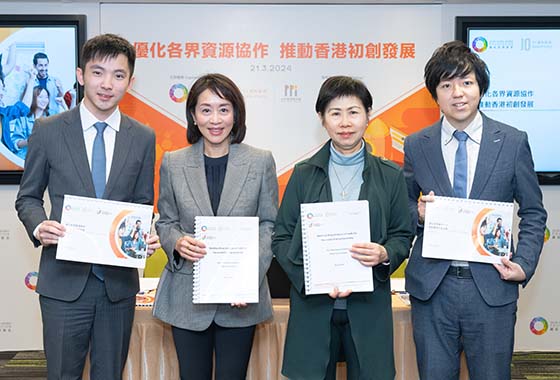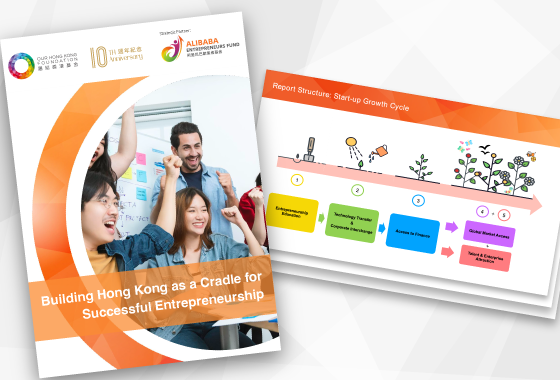Tale of two vaccines: AstraZeneca’s road to success offers lessons for Hong Kong’s biotech ambitions
This article appeared originally in the SCMP on 8 January, 2022.
Authors: Kenny Shui, assistant research director and head of economic development and Arthur Tsang, assistant researcher at Our Hong Kong Foundation

[Read related report]
Amid the global coronavirus pandemic, vaccine development is a race against time in which we all have a stake.
The development time for vaccines from bench to bedside is normally 10 to 15 years. Yet, with the great effort of scientists all over the world, multiple Covid-19 vaccines were developed within one to two years.
As reported recently, the Oxford-AstraZeneca vaccine, in particular, has probably saved more lives than any other, with nearly 2.5 billion doses administered, more than any other vaccine, two-thirds of which have gone to low- and lower-middle-income countries.
First approved for use by British regulators in December 2020, the vaccine was developed in less than a year. As the unsung heroes behind the vaccine said, strong execution and concurrent administration of vaccine development procedures were key levers.
On prototyping the vaccine, animal tests in mice and non-human primates were conducted concurrently. Meanwhile, Phase I trials had already been planned and manufacturing for the pilot batches of vaccines for human trials was under way during preclinical studies.
British regulators fast-tracked the clinical trial approval process and the trials kicked off the day after successful preclinical results were obtained. The global multicentre Phase II and III trials held afterwards were combined as well. Under normal circumstances, all these steps would be separated for detailed data analyses.
In contrast, a team from the University of Hong Kong, including government adviser Professor Yuen Kwok-yung, encountered lots of obstacles to producing a vaccine. The team successfully prototyped an intranasal vaccine for Covid-19 in early 2020, yet Phase I trials were not completed until July last year. Commercialisation of the vaccine is expected to take another two to three years.
The team had a good head start by leveraging its research into a vaccine for seasonal influenza, which began about four years ago. In March 2020, it received funding for preclinical testing as well as support for clinical trials later.
However, as there is no vaccine plant in town, the team turned to plants in mainland China. It took rather a long time to find an appropriate one and the process was further delayed by the unclear approval mechanism for the exportation of home-grown vaccine seeds into the mainland.
The lengthy approval time for Phase I clinical trials is another issue. Such trials are currently approved by the Pharmacy and Poisons Board, whose scale is hardly comparable to regulatory bodies like the US Food and Drug Administration and the Chinese National Medical Products Administration.
Given the lack of regulatory professionals in Hong Kong – that is, those who have knowledge of drug administration processes, such as clinical trials and approval standards and mechanisms – approval for Phase I clinical trials here generally take about half a year. This is longer than in rival markets. Notably in Australia, approval takes only about one month.
Following the completion of Phase I trials, the team is now preparing for Phase II and III trials on a larger scale. As the later-phase trials involve far more human subjects, cooperating with mainland hospitals will be a viable model. However, Hong Kong has limited experience in leading multicentre trials while enabling pioneering mainland-Hong Kong cooperation will surely be demanding.
Financing is another critical issue in carrying out later-phase trials, which usually cost hundreds of millions of Hong Kong dollars. Most of our current Covid-19 vaccines were developed by pharmaceutical companies, some in partnership with universities, and many receive financial support from the government.
A look back at lockdowns, vaccines and variants defining the Covid-19 pandemic in 2021
However, our home-grown vaccine has always been a university-led project: seed funding for preclinical studies was provided by the Coalition for Epidemic Preparedness Innovations, a philanthropic international organisation, and the Phase I clinical trials were co-funded by the coalition, alongside the Hong Kong government.
Public funding amounted to around HK$20 million, which is significantly less than the HK$43 million (US$5.51 million) provided by the coalition. Stronger government support is clearly needed for this university-led project.
The absence of large pharmaceutical companies in Hong Kong and a lack of private funding for vaccine development reveal the city’s incomplete biotechnology ecosystem.
A strong invention with a potentially large market has the makings of a high-value product, yet the lack of supporting facilities and smooth market access to mainland China impede the commercialisation of technological breakthroughs. The government needs to streamline the biotechnology development process by completing the supply chain.
The government should also establish a high-level science and development office comprised of scientists to advise the cabinet on technology development issues, including the formulation of a biotechnology development blueprint, complete with financing strategies.
Furthermore, the approval time for Phase I clinical trials should be shortened by scaling up the regulatory body and avoiding repetitive examinations.
Meanwhile, the Shenzhen-Hong Kong innovation and technology cooperation zone that spans the border can be a springboard for mainland-Hong Kong cooperation.
Not only should small-scale vaccine plants be built to fulfil demand for pilot-batch pharmaceutical products, the zone should also allow the movement of biomaterials across the border for research and development, and act as a platform for Hong Kong clinicians to import best practices for clinical trials into mainland China and lead multicentre later-phase clinical trials in both Hong Kong and mainland hospitals.
Clearly, the British moon-shot task of launching a vaccine within a year is not a matter of luck but was built on preceding efforts in creating an accommodating biotechnology ecosystem. Hong Kong should not miss out on further opportunities but, rather, act with speed and determination to realise its vision.



